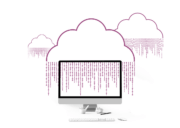
I am currently pursuing my Master’s degree in Computer Engineering, and amidst an intense and relentless study schedule, as the Italian poet Leopardi might say, I have just completed my third exam.
The subject? One of the most widely debated topics in the IT world: Big Data.
Defining Big Data
Big Data refers to extremely large datasets that can be analyzed to reveal patterns, trends, and associations—particularly in relation to human behavior and interactions. Over time, these datasets have become so vast that traditional storage and processing methods no longer suffice.
Back in 2001, Doug Laney, an analyst at Gartner (a leading IT consulting firm), defined Big Data using the three Vs:
- Volume
- Variety
- Velocity
Later, a fourth V was introduced: Veracity, addressing the reliability and accuracy of data.
Volume
The amount of data stored by major corporations like Apple or eBay is measured in petabytes—where one petabyte equals 10^15 bytes of information.
To put this into perspective, a standard laptop hard drive typically holds around 10^9 bytes (one gigabyte). This means that the data repositories of these companies store the equivalent of at least one million PCs, possibly even between 10 to 20 million PCs’ worth of data.
But where does all this data come from?
Consider:
- Loyalty cards: Every purchase, payment method, and coupon use is tracked at checkout.
- Websites: Every product viewed, page visited, and item purchased is logged.
- Social Media: Friends, contacts, posts, locations, photos (which can be scanned for identification), and any other shared information.
Variety
Big Data originates from a diverse range of sources, which can be categorized as structured and unstructured data.
Structured Data
Structured data is organized into predefined fields (e.g., numerical values, text, dates) within a fixed record format. It requires a data model that defines and limits what can be stored and how it can be processed.
Example: Banking systems, where transactions are recorded with details such as date, amount, and type (deposit or withdrawal). This data is easily accessible via structured query languages like SQL.
Unstructured Data
Unstructured data lacks a predefined format, making it difficult to store, search, and analyze. This includes images, videos, audio files, and text documents. Unlike structured data, unstructured data is often stored in NoSQL databases, which offer more flexible storage solutions without strict tabular structures.
Examples include:
- PDF or DOCX files
- Emails
- Multimedia content (audio, video, images)
Velocity
For data to be useful, it must be processed in real-time.
One of the biggest challenges in IT is finding ways to process vast amounts of inconsistent data as quickly as possible. Enter Big Data software solutions.
One of the most well-known frameworks, Apache Hadoop, was designed to handle distributed data processing across multiple machines using simple programming models. Hadoop scales from a single server to thousands of computers, each providing local processing and storage.
Big Data Analytics
Big Data is commonly processed through Big Data Analytics, which includes:
- Data Mining: Identifying patterns and relationships (associations, sequences, correlations)
- Predictive Analytics: Using data to forecast future events
- Text Analytics: Extracting useful insights from emails and documents
- Voice Analytics: Processing audio files for information retrieval
- Statistical Analysis: Identifying trends and behavioral changes
The Challenges of Big Data
Despite its vast potential, Big Data presents several challenges:
1. Cost
Setting up the necessary hardware and analytical software is expensive. Additionally, varying data regulations across different countries can create unpredictable costs and compliance challenges.
2. Data Security & Privacy Risks
Losing or having data stolen can lead to serious consequences. Companies may face civil lawsuits and regulatory penalties if data breaches result in harm to individuals. (Recent cases prove how critical this issue has become.)
3. Veracity: The Risk of Incorrect Data
If stored data is inaccurate or outdated, decision-making processes may be compromised, leading to flawed conclusions and potential financial losses.
Preparing for the Future
Before implementing Big Data strategies, organizations must foster a collaborative and adaptive corporate culture. According to a recent study, nearly 78% of companies cite workplace culture as one of the biggest barriers to adopting data-driven decision-making.
Big Data is more than just a buzzword—it is reshaping how businesses operate. But without proper management, it can become an untamed beast rather than a strategic asset.




